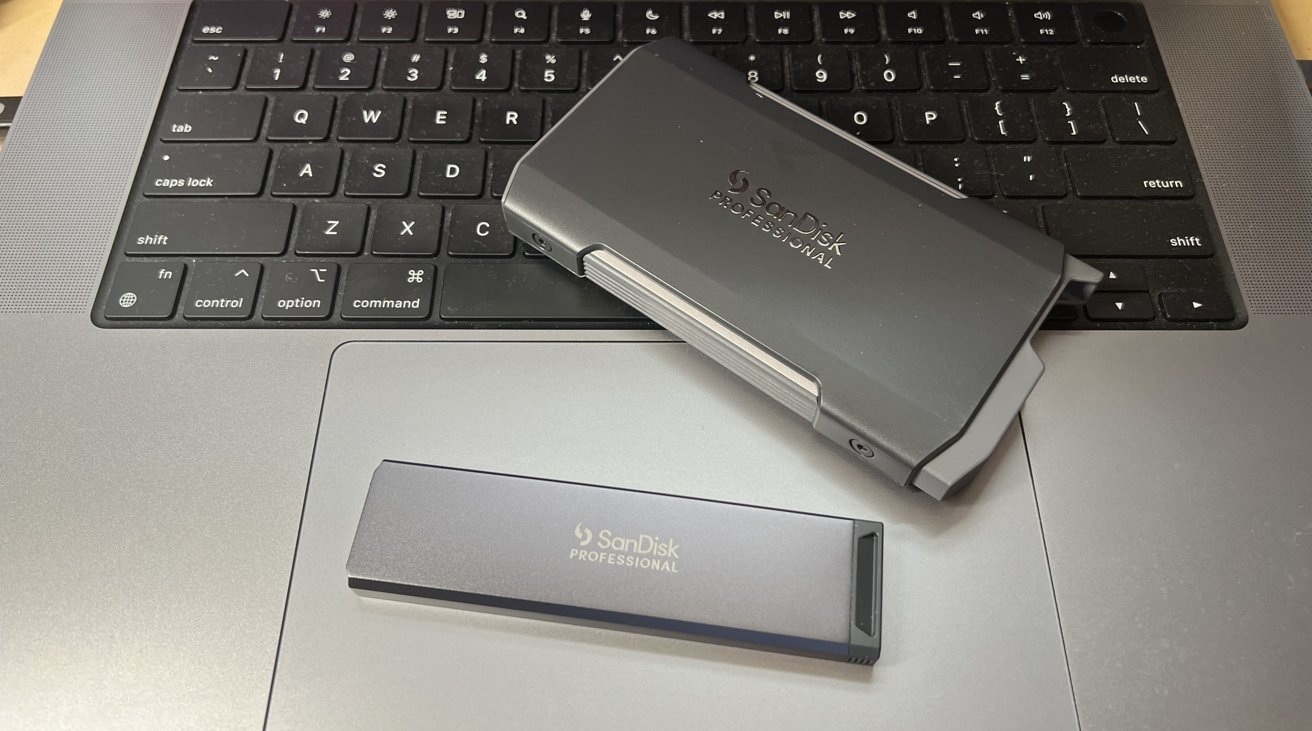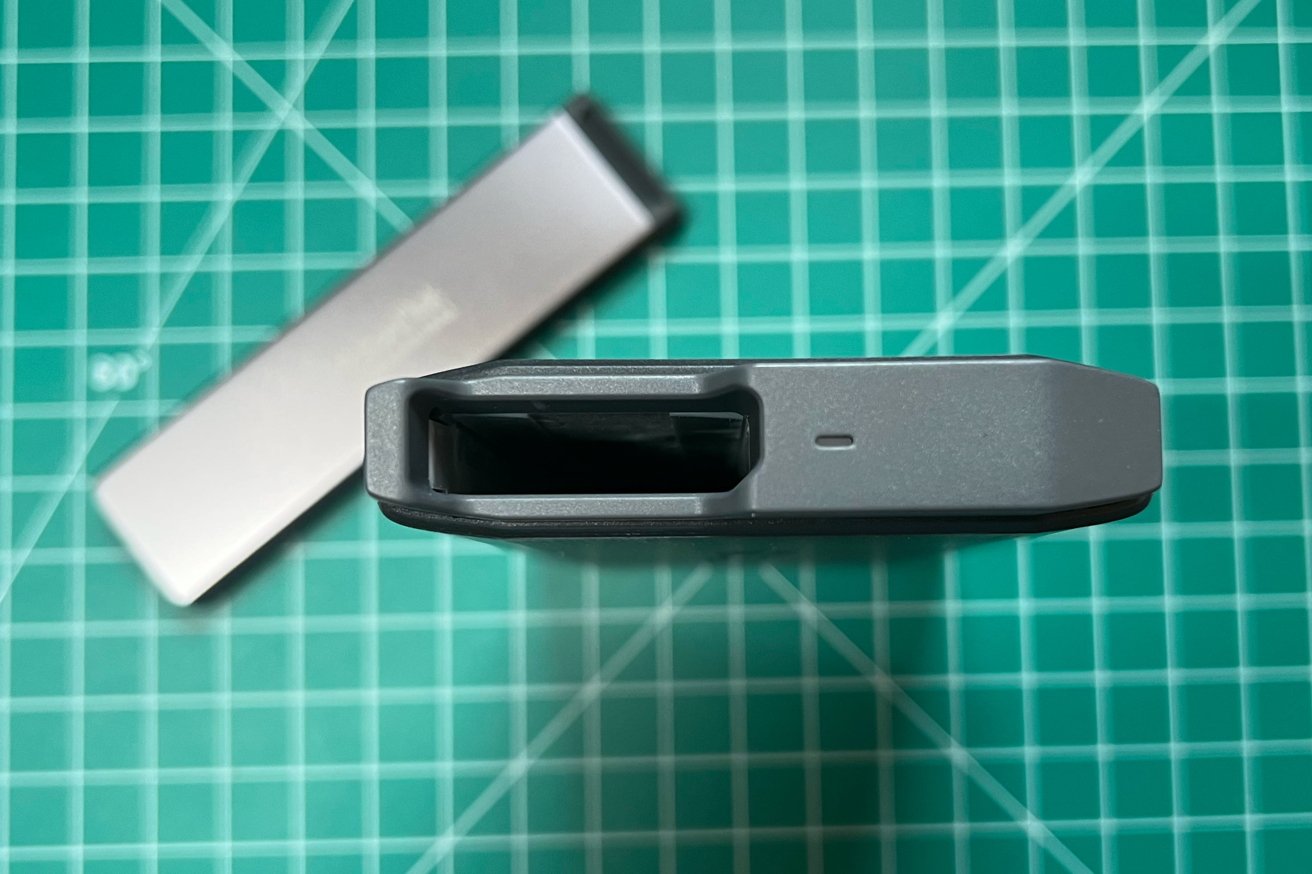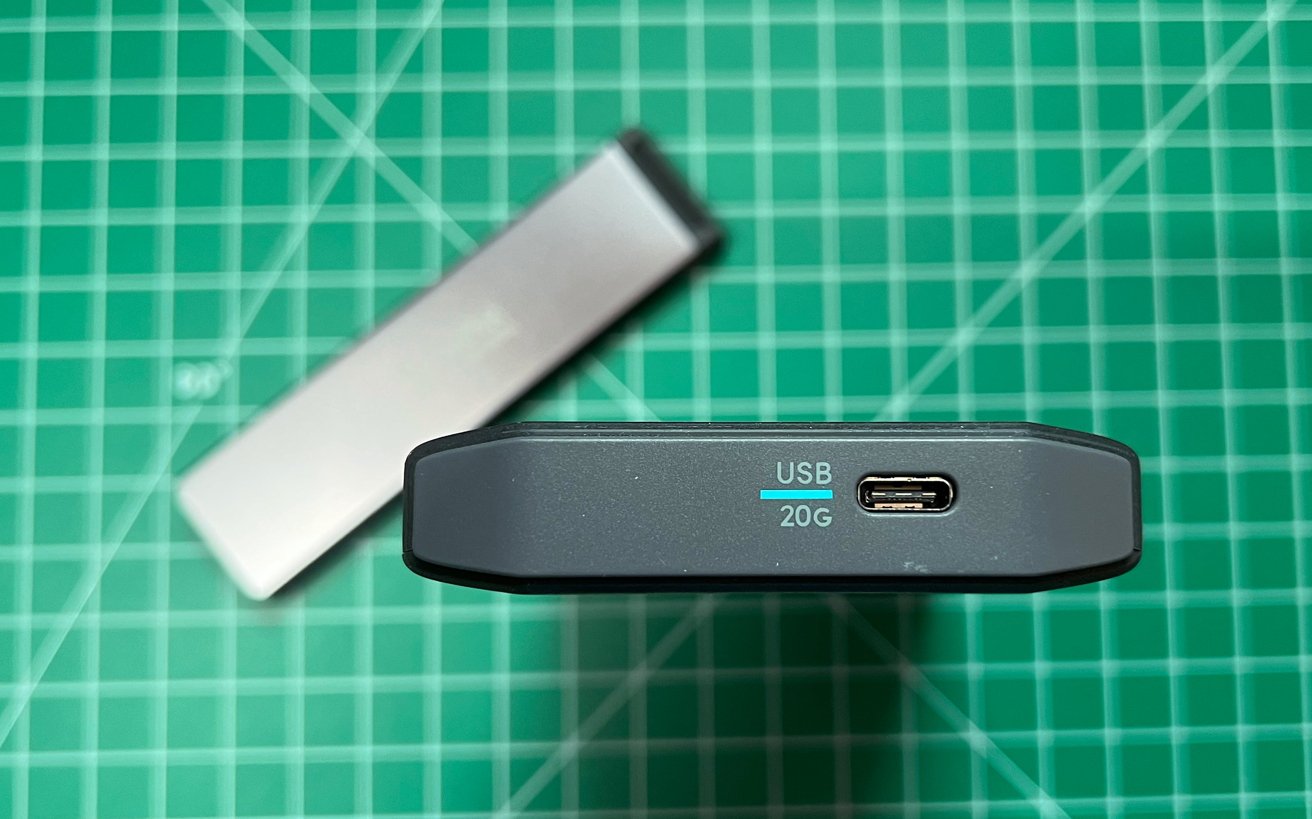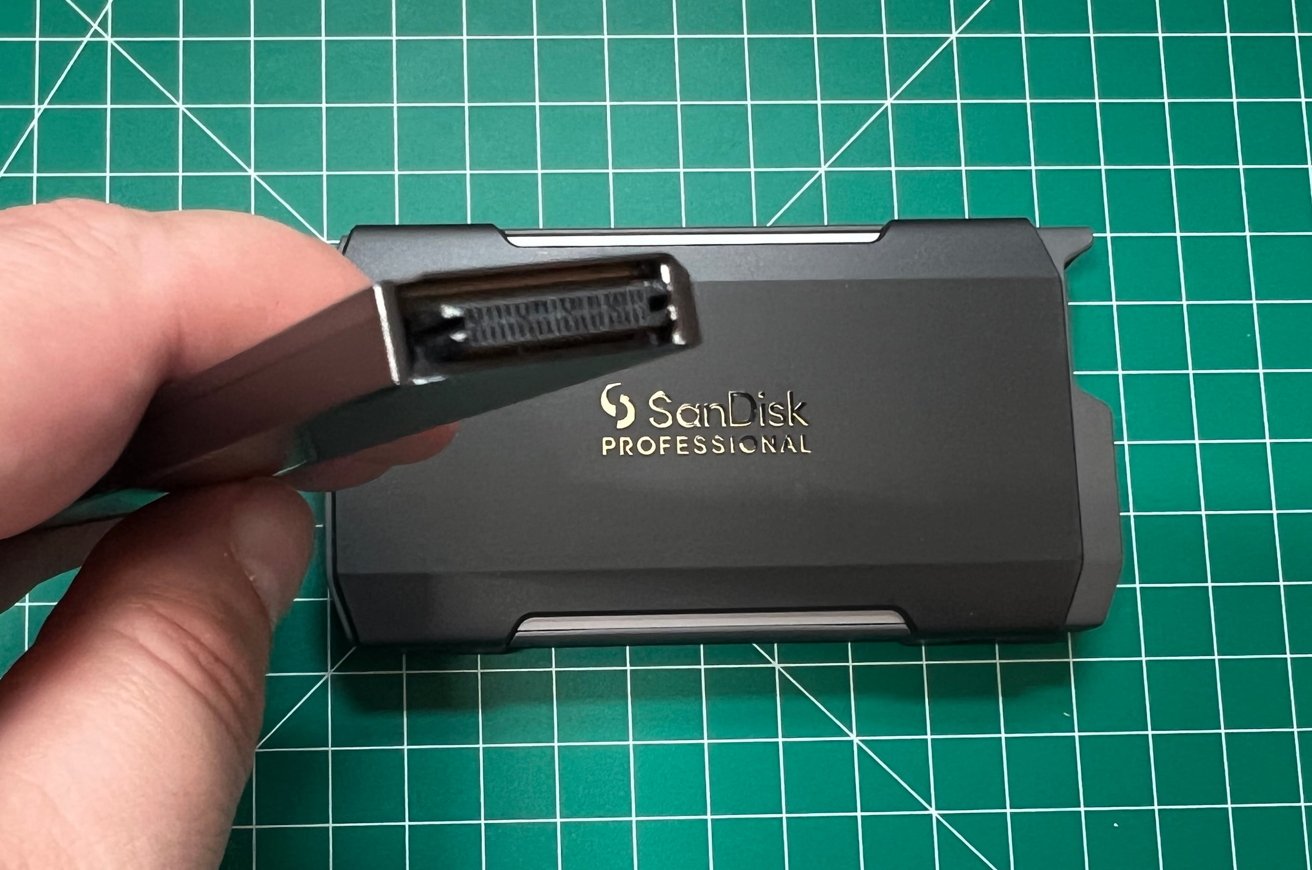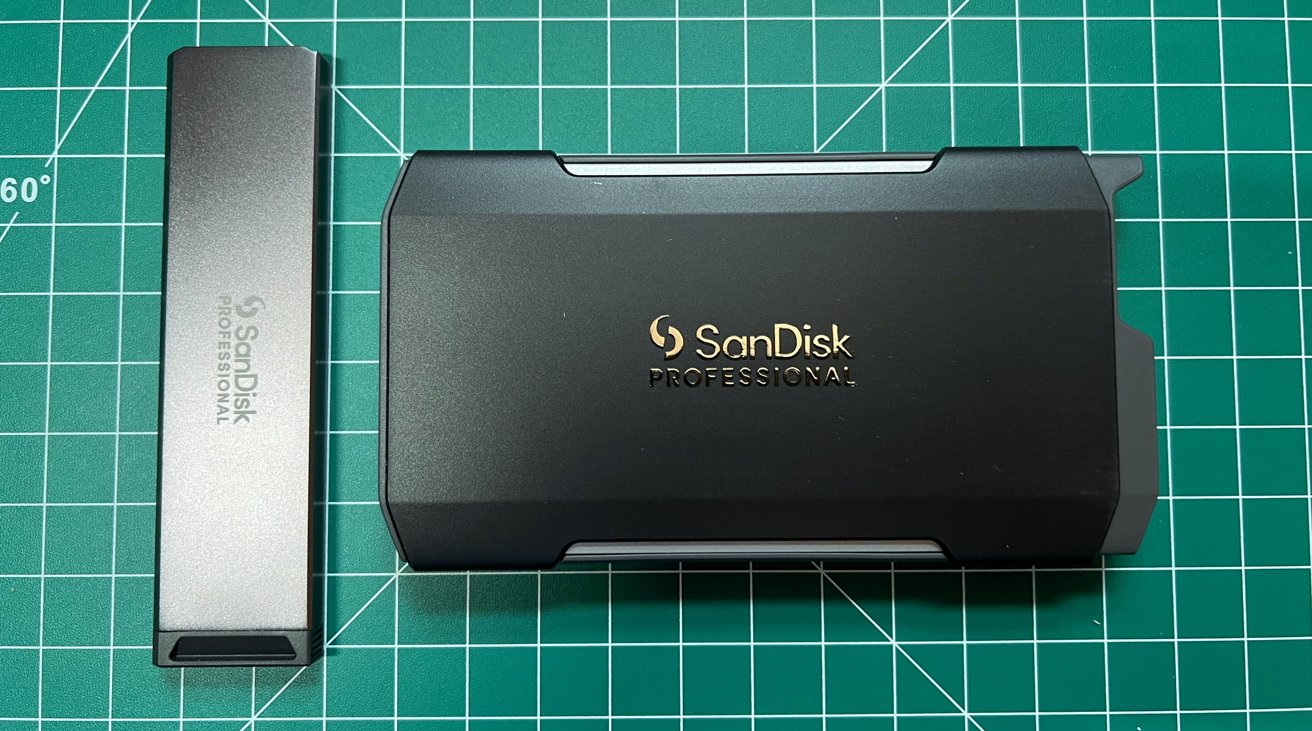AppleInsider may earn an affiliate commission on purchases made through links on our site.
SanDisk Professional’s Pro-Blade SSD is a modular storage system that has good enough speed, and is reasonably compact, but it needs time to evolve and see greater adoption.
Most of the AppleInsider staff used Zip disks in their heyday. For those that didn’t, they were portable magnetic media a bit larger than a floppy disk that slotted into a relatively inexpensive drive.
Most of the major manufacturers adopted them as at least an option. Apple did too.
But for many reasons, they faded into obscurity. Data density was one issue, and so was reliability on not just it, but its larger cousin, the Jaz drive. And, they were mostly replaced with flash drives.
Fast forward about two decades to today, and SanDisk has resurrected the idea of removable media in a custom enclosure with the idea of the flash drive, resulting in the SanDisk Professional Pro-Blade Transport system. The Pro-Blade ecosystem revolves around high-speed SSD “Mags,” which are slimline and lightweight, and hold the actual media.
To interface them with your Mac, you at a minimum need the SanDisk Pro-Blade Transport. That enclosure is effectively the main enclosure for an external drive, but without the drive itself.
The theory is that you have one or relatively few Transports, but lots of SSD Mags. Tried and true model, once upon a time.
Pro-Blade Transport
Of the two types of component, the Transport is the bit that connects to your Mac. The SSD Mag fits into the Transport, which in turn communicates to the Mac.
In effect, the Transport is a specialized hard drive docking station or “toaster.” Except it’s in a much smaller form.
Made from aluminum complete with an aluminum heatsink to help cool the SSD Mags, the Transport is a relatively straightforward docking element. On one end is the slot where the SSD Mag fits in, along with an indicator light.
The slot is made so that you can easily insert and pull out the SSD Mag, so that you can quickly switch between Mags without too much interference.
At the other end is just one port, a USB-C 3.2 Gen 2×2 connection with up to 20Gbps of bandwidth available to use.
As an enclosure, it’s also reasonably sized at 5.13 inches long, 2.82 inches wide, and 0.63 inches thick. It’s fairly lightweight when empty at 0.46 pounds. This is still much bigger than the recent crop of NVMe USB-C enclosures.
It can be used on both Macs and Windows, with support for macOS 10.13 or later and Windows 10, though you will have to reformat the Mags. For the former, it is compatible with Time Machine, though admittedly this is better suited for work-use drives rather than backups.
Pro-Blade SSD Mags
The actual storage bit of the system, the SSD Mags are long, thin slabs of aluminum with SanDisk branding in the middle. At one end is a divot to help grip the Mag when it’s in the slot.
The other end has the connector that couples to its counterpart deep inside the Transport. It will also work with the Pro-Blade Station, a more enhanced form of the Transport that can take up to four Mags.
However, this isn’t a standard connector that will work outside of the system itself. You cannot directly connect the drive alone to your Mac, you must use the Transport.
Each Mag is very light at a tenth of a pound each. They’re not quite as long at 4.32 inches, but they’re also a lot thinner and narrower at 1.1 inches and 0.2 inches.
Despite their size, SanDisk worked to make each one durable. Away from the Transport, each blade can withstand a 3-meter (9.8ft) drop, and can survive being crushed by a 4,000-pound weight.
We did run one over with our minivan, and it survived, intact and readable. Scuffed, but intact.
So far, there are four different capacities of Pro-Blade SSD Mag available, including 1TB, 2TB, and 4TB versions, and all using NVMe storage
Assisted by the aluminum enclosure and the heatsink in the Transport, the SSD Mag is capable of read speeds of up to 2,000 megabytes per second.
Our testing bore this out. Read speeds routinely hit 1.92 gigabytes per second, and read speeds generally hovered at 1.86 megabytes per second. We didn’t see a significant decrease in speed over time, but more on that in a bit.
Curious, we ripped one apart. The enclosure is held together with a trio of T5 screws, and a pile of thermal compound connecting the drive and the enclosure. Inside the 2TB capacity Mag is a tiny bridge board with a Mag connector, and a Western Digital SN750 NVMe SSD with 2GB of cache.
In theory, that drive could push over 3 gigabytes per second, and did when we moved it to a Thunderbolt enclosure. But, it can only push this much data for about 12GB of transfer. After that, speeds in the Thunderbolt enclosure dropped to about 1.6 gigabytes per second.
So, with that 20 gigabit USB-C connection, you are more or less assured of steady-state performance at the claimed speeds.
A space-saving solution for professional users
SanDisk provided us two carriers and a few Mags for testing. We didn’t get to test out the four-Mag $499 Pro-Blade Station, as it does not appear to ship until March.
For the average user, the SanDisk Professional Pro-Blade modular storage system is overkill. Even Mac power users will have quite some trouble justifying this sort of purchase, and it’s not because of the price.
Buying each Mag individually costs $179.99 for 1TB, $299.99 for 2TB, and $599.99 for 4TB, which is fairly reasonable when compared with the general NVMe market. The Transport costs $69.99 on its own, which is pretty good for a storage-free component.
There are bundles available of the Transport with each SSD Mag capacity, starting at $239.99 for 1TB then rising to $349.99 for 2TB and $579.99 for 4TB.
The nosebleed pricing of NVMe is justified by its blisteringly fast performance, which is reasonable on its own, especially if you have the need for it. It’s more than enough for almost anyone to be able to work directly from the external drive without any real issues.
The problematic bit is that this is a modular storage system with an extremely specific set of purposes in mind. It’s to cut down the overall size of external storage if you need to use mountains of drives, and it’s to make it as easy as possible to switch between physical drives.
The average user and even the “prosumer” has other, better options. However, videographers and the like working from the drive directly and using each one per project can then physically hand over to someone else, which is good from a flexibility standpoint. And, they’re easy to store and label.
For that purpose, the SanDisk Professional Pro-Blade Transport and SSD Mags are a useful tool for data storage involving multiple drives. For other users, more traditional external storage drives are a better and more cost-effective than Mags and Transports.
Looking to the future, though, is where the Pro-Blade has potential. The Pro-Blade Station is a good start, with Thunderbolt connectivity. If peripherals like the Pro Blade or some kind of Thunderbolt dock incorporating the Mags, with more ports and monitor connectivity becomes more ubiquitous, paired with adoption in devices that demand high speeds like video cameras, then we see a bright future for the technology.
Until then, though, we’re not sure who’s asking for this solution today. We’ll revisit this in the future.
SanDisk Pro-Blade Transport Pros
- High-speed transfers
- Quick switching between Mags
- Compact size considering the use of multiple drives
- Premium aluminum styling
- Great for video editors
SanDisk Pro-Blade Transport Cons
- Overkill and too costly for most users
- Non-standard connector limits use of SSD Mags outside of the ecosystem
Rating: 3 out of 5
Where to buy


